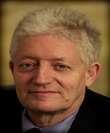Day 1 :
Keynote Forum
Karin Moelling
University of Zurich, USA.
Keynote: Regulation of Raf kinase as predictor for therapeutic effects
Time : 09:45-10:15

Biography:
Prof em and Director em of Institute of medical Virology, University of Zürich; Senior Research Guest at Max-Planck-Institute for Molecular Genetics, Berlin. Guest Prof. at Heinrich Pette-Institute for Virology, Hamburg Karin Moelling has studied retroviruses and oncogenes, first as research fellow at the Max-Planck-Institute, Berlin, then as Prof and Director at the Institute of Medical Virology, Zürich. She discovered the retroviral RNase H, required for viral replication, and the oncoprotein Mil/Raf Kinase, which became recently an important target for anticancer therapy. She described the striking dual role of Raf either as driver of growth or growth arrest (differentiation). Also the nuclear role and DNA binding of the oncoprotein Myc was detected by KM. She characterized the replication of HIV and developed a suicide mechanism to destroy the virus. KM suggests a scenario for early evolution with viruses as our oldest ancestors and demonstrated the similarities between viruses and antiviral defense.
Abstract:
The Raf kinase was discovered 30 years ago as a retroviral oncogene (1). It is activated in several human cancers and a major target of recent drug therapy. However, the Raf kinase can also induce differentiation instead of proliferation, depending on the cell-type and growth factor stimuli. We described a cross-talk between the Raf-kinase and the PI3Kinase pathways which influences the cellular responses (2,3). Thus, in cells where the Raf kinase is normally inducing differentiation, anti-cancer drugs may induce prolieration and cause an undesired opposite effect. This has been observed repeatedly in patients treated with one of the novel drugs against the Raf kinase. We also described previously two negative feedback loops inducing upstream signalling from Raf-MEK to the EGF receptor. Again, inhibition of this loop by drugs against Raf may induce the opposite effect. This was indeed observed in patients and therefore recently a dual therapy was applied in order to compensate for the loss of the negative feedback, with some therapeutic success. Considering the unexpected counterintuitive effects of Raf kinase inhibitors and novel therapeutics it is worth discussing the known regulatory mechanisms we have described, and avoid side-effects.
Keynote Forum
James A Shapiro
University of Chicago, USA
Keynote: Retroviruses and the RW Genome
Time : 10:15-10:45

Biography:
James A Shapiro, Author of the 2011 book Evolution: A View from the 21st Century is Professor of Microbiology at the University of Chicago. He has a BA in English Literature from Harvard (1964) and a PhD in Genetics from Cambridge (1968). During a Postdoctoral at the Institute Pasteur in 1968, he established insertion mutations in bacteria. In 1969, he and colleagues at Harvard Medical School used in vivo genetic manipulations to clone and purify the lac operon. With Bukhari and Adhya in 1976, he organized the first conference on DNA insertion elements. In 1979, Shapiro formulated a molecular model for transposition. In 1984, he showed that selection stress triggers transposon action. Since 1992, he has been writing about the importance of biologically regulated natural genetic engineering.
Abstract:
The RW Genome means that cells actively inscribe information onto and into their DNA. In real time, these inscriptions include nucleoprotein complexes and epigenetic chromatin modifications. Over evolutionary time, natural genetic engineering functions rearrange and incorporate new information into the DNA. Retroviruses are key components of the genetic engineering toolbox. In the course of mammalian and human evolution, they have played important roles, including contributions to the origination of the placenta and pregnancy. The lecture will highlight how retroviruses contribute into genome content and regulatory formatting.
Keynote Forum
Prabagaran Narayanasamy
University of Nebraska Medical center, USA
Keynote: Novel methodology and drug to treat HIV-mycobacterium co-infection
Time : 11:00-11:30

Biography:
Prabagaran Narayanasamy is a faculty member in the Department of Pathology and Microbiology at the University of Nebraska Medical Center. He received his PhD at IIT in Organic Chemistry and did his Postdoctoral studies at North Dakota State University, Harvard University and University of Illinois Urbana-Champaign Later, he joined as a Research Scientist at Colorado State University to explore drug discovery. He has been a faculty at University of Nebraska Medical Center since 2011. His research interests are on development, delivering and discovering drug for anti-mycobacterial medicine and antiretroviral therapy. For antibacterial drug discovery - glyoxalase, quorum sensing, MEP and menaquinone pathway are utilized. For antiviral drug discovery NRTI concept is used. Conventional (HIV and TB) drugs and new inhibitors are used in Nano formulation to generate active Nano medicine for sustained drug release through macrophages. In vitro and In vivo characterizations of drug like compounds were also carried out. In addition, the metabolites are evaluated in the infected brain for characterizing neurodegenerative disorders. He has funding from NIH and also in study sections.
Abstract:
Human immunodeficiency virus (HIV) infection and Mycobacterium tuberculosis (TB) are responsible for two of major global human infectious diseases. As a result co-infection is common. Thus, improvements in drug access and simplified regimens are needed immediately. One of the key host cells infected by both HIV and TB is the mononuclear phagocyte (macrophage). Therefore, we hypothesized that one way this can be achieved is through Nano formulated drug that ideally would be active against both HIV and TB. We manufactured Nano formulations of antibiotics, antiretroviral therapy and Gallium (Ga). The manufactured Nano medicine was used to study the drug uptake and release kinetics by monocytes (MDM) treated with macrophage colony stimulating factor (MCSF). Finally the efficacy study with Nano medicine was done against Mycobacterium smegmatis, HIV and co-infection in macrophages. The nanoparticle (NP) agent enhanced the drug uptake and maintained the drug release. It also inhibited growth of both HIV and mycobacterium in the macrophage separately and while co-infected for up to 15 days following single drug loading. The NP was also found in all compartments of macrophage in subcellular trafficking study. The multi targeted prolonged-acting NP was effective up to 15 days after single drug loading. The subcellular trafficking of NP was determined and the presence of NP in all the compartments confirmed the multi-targeting approach. These results provide a potential new approach to treat HIV-mycobacterial co-infection that could eventually lead to improved clinical outcomes.
- Track 1: Early Evolution
Track 2: Retroviral Diseases and Antivirals
Track 3: Retroviral Co-infections
Track 4: Viral Pathogenesis
Session Introduction
Donatien Mavoungou
University of Health Science, Gabon
Title: Immunorex TM as vaccine approach by its ability to inhibit HIV-1 and co-infecting pathogens: The role of its Lipid fraction carrier
Time : 11:30-11:55

Biography:
Donatien Mavoungou is the Director of the Research Center on Hormonal Pathologies (CRPH) Gabon. He is the Invited Member at McGill University Aids Center (Montreal) and at Genomic Chair of Canada. He authored more than 150 publications. He discovered IMMUNOREX TM DM28 inhibiting HIV-1 replication. He is Professor of Biochemistry and Endocrinology at the University of Health Science Libreville, Gabon. Field: HIV, Metabolic disorders, HAART, Hormonal Therapy. He received the Prize of the National Center for Scientific Research in 2009 and 2012. (Gabon). He is the Blue Ribbon Presenter, recipient of the Glaxo Smith Klein Award at ISHIB, Orlando (USA, 2007). He is the Member of WABT Academy.
Abstract:
LCF microbicidal activity was assessed by the sensitivity using the methods of Chapman and Sabourreau. Escherichia coli (E.coli), Staphylococcus aureus, Pseudomonas and Klebsiella were isolated from the urine of HIV-1-infected patients diagnosed by western Blot technique. Various antibiotic disc (ABD) have been impregnated at 25°C with the LCF (Group 1), then dried and incubated with various germs isolated in parallel with native counter parts in Group 2. The diameters were measured (cm) to compare sensitivity between groups. LCF showed significant increase of respective antibiotics via diameter (cm): 16→28; 10→18 + Ac Claulamique for Staphylococcus aureus, LCF increased sensitivities of Amoxicilline, Cefotaxime (0→32), Netelmicine ( 20→34); Rifampicine (13→22).Cefotaxime (21→24); Aztreonam (41→48) and Amoxicilline Ac clavulamique ( 0→18) for E. coli while for Klebsiella, sensitivities to ABD was: Amoxiciline + Ac. clavulamique (20→28;24→30); Neteilmicine (20→24; 20→28); LCF showed while for Pseudomonas, negligible sensitivities to ABD. ImmunorexTM revealed potential microbicide activity that may contribute to block HIV-1 infection and the cooperation with co-infecting pathogens, protecting the unavoidable TH1 and TH2 balance in a drug and vaccine approach against HIV-1, including Tat Oyi vaccine as suggested by Biosantech, France.
Dawit Assefa
Ethiopian Public Health Institute, Ethiopia
Title: Surveillance of transmitted HIV drug resistant among voluntary counseling and testing centers clients in Gondar town, Ethiopia
Time : 11:55-12:20
Biography:
Dawit Assefa Research student at Clinical Virology, Malmö located at Sweden
Abstract:
Background: In Ethiopia, free access to ART has been expanded rapidly since 2005. With the rapid scale up and decentralization of the ART service, the emergency and transmission of HIV drug resistance (HIVDR) will be a major problem. In view of this, we evaluated the prevalence of transmitted HIVDR (TDR) in recently HIV-1 infected adults in Gondar town, Ethiopia using WHO threshold surveillance method. Methods: A cross-sectional survey was conducted among antiretroviral naive adults who were seeking HIV diagnostic testing in VCT site in Gondar university hospital and Gondar Health center, from August 2011 to December 2012 using the WHO recommended eligibility criterion. A total of 84 study participants fulfilling the inclusion criterion were consecutively enrolled and blood specimen were collected. HIVDR genotyping was done using the in-house assay. Sequences were interpreted using the calibrated population resistance (CPR) tool of the Stanford University database according to the 2009 WHO surveillance drug resistance mutation (SDRM) list. Result: Among the 84 participants, 70 (83.3%) were female and mean age was 21years (range: 18–24 years). Amplification and sequencing was successful for 67(79.8%) of specimens. Using the WHO recommended truncated sequential sampling technique, among the first 47 sequenced specimens, 3 were found to harbor major HIVDR mutation associated to non-nucleoside reverse transcriptase inhibitor (NNRTI), suggesting moderate prevalence (5%–15%) of TDR in the study area. The mutation detected were K103N (n=2) and G190S (n=1). Including all sequenced sample in the analysis (n=67), 4(6%) were found to have major HIVDR mutations (K103N (n=2), G190S (n=1), and Y181Y (n=1)) associated to NNRTI. However, no nucleoside/tide reverse transcriptase inhibitor (NRTI) or protease inhibitor (PI) associated major HIVDR mutation were detected. Conclusion: In comparison to previous studies done in the Gondar town, our result showed an increase in prevalence of TDR, which could be associated to the ART scale up. As the TDR HIV-1 may seriously affect the efficacy of first line ART, the moderate levels of TDR observed in this study area indicate the need for continuous surveillance of TDR in Gondar town and in different region of Ethiopia to optimize treatment efficacy of the current ART and improve the drug resistance strategy within a country.
Sergei Nekhai
Center for Sickle Cell Disease, USA
Title: Protein phosphatase-1 as a target for antiviral small molecules against HIV-1 infections
Time : 12:20-12:45
Biography:
Sergei Nekhai has a Ph.D. degree in biophysics from St. Petersburg Nuclear Physics Institute, Russia. He did his postdoctoral training at the George Washington University. He serves as co-Director for Howard University’s Center for Sickle Cell Disease and Director of Proteomics. He studies HIV-1 transcription, pulmonary hypertension in sickle cell disease and iron metabolism with the focus on ferroportin mutations that might pose a risk for iron overload and worsen HIV-1 infection in African-Americans. He has more than 50 publications in basic virology and hematology journals and serves as a PI and co-PI on several NIH-funded grants.
Abstract:
HIV-1 transcription is activated by Tat protein that recruits CDK9/cyclin T1 to TAR RNA. We previously showed that Tat also binds to protein phosphatase-1 (PP1) through the Q35VCF38 sequence and translocates PP1 to the nucleus. PP1 dephosphorylates CDK9 and activates HIV-1 transcription. We recently identified PP1-targeting small molecule, 1H4, that prevented HIV-1 Tat interaction with PP1 and inhibited HIV-1 gene transcription. Using the model of 1H4-PP1 complex we iteratively designed and synthesized follow-up libraries that were analyzed for the inhibition of HIV-1 transcription and toxicity. We obtained a tetrahydroquinoline derivative, 1E7, which inhibited phosphatase activity of PP1 and also disrupted the interaction of Tat with PP1. We further optimized 1E7 and obtained compound 1E7-03 that inhibited HIV-1 with low IC50, showed no toxicity when administered in mice. The 1E7-03 was also active in HIV-1 transgenic mice preventing death from acute lung inflammation induced by LPS injection. The LPS administration led to neutrophil and macrophages recruitment to the lungs where HIV-1 expression in the lung macrophages prevented neutrophil clearance. Injection of 1E7-03 reduced both macrophages and neutrophil accumulation in the lungs likely due to the reduction of HIV-1 expression. We further analyzed stability of 1E7-03 compound and identified its major metabolites. We also developed 1E7-03 analogs that had improved stability and showed similar activity to the parental compound. Our study shows that PP1 can serve as a target for development of novel therapeutics against HIV-1 to target HIV-1 expression in lungs and potentially other organs. Acknowledgements: This work was supported by NIH Research Grants (1P50HL118006, 1R01HL125005, U19AI109664 and 5G12MD007597), and District of Columbia Developmental Center for AIDS Research grant (P30AI087714). This study was also funded in part with NIH Grant UL1TR000101 from the National Center for Advancing Translational Sciences (NCATS), National Institutes of Health (NIH), through the Clinical and Translational Science Awards Program (CTSA), a trademark of DHHS, part of the Roadmap Initiative, “Re-Engineering the Clinical Research Enterprise.” The content is solely the responsibility of the authors and does not necessarily represent the official views of the National Institutes of Health.
Binhua Ling
Tulane University, USA
Title: Viral evolution in the gut reservoirs from SIV infected long term non-progressing Chinese rhesus macaques on combination anti-retroviral therapy
Time : 12:45:-13:10

Biography:
Binhua Ling of Tulane University, New Orleans with expertise in Clinical Immunology, Infectious Diseases, Allergology , HIV, AIDS
Abstract:
HIV infected long term non-progressors (LTNP) and elite controllers (EC) maintain enduring control of HIV infection without anti-retroviral therapy (ART). Emerging evidence suggests that cells in tissues such as the gut continue to produce low levels of HIV, low level ongoing viral production occurs in the body even with concurrent ART. Whether LTNP/ EC receiving ART can completely suppress low level ongoing viral replication is unknown. We have previously found that SIV infection in Chinese rhesus macaque (ChRM) is the closest animal model that mimics HIV infection. We have also shown that gut mucosa is a major reservoir in LTNP/EC of SIV infected ChRM. Here we studied SIV mutation and evolution in the gut associated lymphoid tissue to determine whether ART can fully suppress viral replication in LTNP/EC of SIV infected ChRM. Ten animals were treated with reverse integrase inhibitors (tenofovir and Emtricitabine) daily for up to 24 weeks. PBMCs and lymphocytes were isolated from blood, spleen, lymph nodes and gut tissues of 6 sites (duodenum, jejunum, ileum, cecum, colon and rectum) by the end of ART. Nested PCR and single genome amplification (SGA) was performed. SIV envelope gp120 gene from positive samples was amplified. Sequences from PBMC before and after ART were compared with sequences isolated from the 6 sites of the small and large intestine. Phylogenetic trees were constructed. Viral mutation and evolution were analyzed. The size of reservoirs in PBMC and lymph nodes was evaluated by quantitative co-culture assays. We found that plasma viral loads (pVL) in all animals were suppressed and sustained below 28 copies per ml (limitation of detection) during ART. Two animals had viral rebound after approximately 2 weeks of cessation of ART. Viral DNA loads were detectable in either PBMCs and/or lymphocytes from different gut sections at variant levels by the end of ART. The frequency of detective PCR positives was higher in large intestine than small intestine, indicating large intestine is a major reservoir. A total of 245 sequences were analyzed. While envelope sequences showed limited viral mutations in some animals, viral evolution was observed in different sections of the gut in other animals even received 24 weeks of ART with sustained undetectable pVL. The size of viral reservoirs in blood reduced in LTNPs/ECs after ART. However, spleen and lymph nodes had higher resting CD4+ T cells carrying replication competent SIV than blood by the end of ART. These data suggest that low level of ongoing viral replication may still occur in some LTNP on ART. The SIV/ChRM non-human primate model is excellent for testing novel therapeutic interventions on typical progressors and LTNP/EC for HIV eradication.
- Track 5: Exogenous & Endogenous Retroviruses
Track 6: Viral RNA Synthesis and Trafficking
Track 7: Gene therapy
Track 8: Cancer Virology
Session Introduction
Lu Tao
Indiana University, USA
Title: VBIM technology identifies adenomatous polyposis coli like protein (ALP) as a novel negative regulator of NF-κB
Time : 14:00-14:25

Biography:
Tao Lu is a tenure-track Assistant Professor and Principle Investigator at Department of Pharmacology and Toxicology and Department of Biochemistry and Molecular Biology, as well as a member of Experimental and Developmental Therapeutics Research Program at Simon Cancer Center at Indiana University School of Medicine. She obtained her Ph.D. degree from University of Toledo, School of Medicine. She then did her postdoctoral training with the world renowned scientist Dr. George R. Stark at Cleveland Clinic, Ohio. She has been working on discovery of novel regulators of NFκB, and is particular interested in epigenetic regulation of transcription factors and their role in cancer. She has won several international awards, including the First Place Prize of Young Investigator Award at Tri-Society [Society of Leukocyte Biology (SLB) & International Cytokine Society (ICS) & International Society of Interferon and Cytokine Research (ISICR)] conference and Seymour and Vivian Milstein Young Investigator Award at ISICR & ICS International conference.
Abstract:
Colon cancer is the second leading cause of cancer related deaths in the United States. The nuclear factor κB (NF-κB) is an important family of transcription factors whose aberrant activation has been found in many types of cancer, including colon cancer. Therefore, understanding the regulation of NF-κB is of ultimate importance for cancer therapy. The purpose of this study is to use a novel validation-based insertional mutagenesis (VBIM) strategy to identify novel regulators of NF-κB, and further evaluate their roles in the regulation of NF-κB signaling in colon cancer cells. We infected Z cells (293 derived cells with hyper active NF-κB activity) with VBIM virus to cause the over expression of negative regulators of NF-κB, and then further selected the mutant cells with low NF-κB activity under ganciclovir (GCV) treatment. Targeted gene was then identified by using VBIM specific primers. In a preliminary screen, we identified the novel adenomatous polyposis coli like protein (ALP) gene as a negative regulator of NF-κB. Over expression of ALP led to decreased NF-κB activity by κB reporter assay, while knocking it down had the opposite effect. Furthermore, we found that over expression of ALP in HT29 colon cancer cells greatly reduced both the number and the size of colonies that were formed in a soft agar assay, while using shRNA resulted in an opposite effect, confirming that ALP is a tumor suppressor in HT29 cells. Future experiments aim to further assess the role of ALP in colon tumor formation in a mouse xenograft model. In summary, by using the novel VBIM technique, we identified ALP as a novel negative regulator of NF-κB. This discovery could lead to the establishment of ALP as a potential biomarker and therapeutic target in colon cancer.
Corrado Spadafora
Institute of Translational Pharmacology, CNR National Resarch Council of Italy, Rome, Italy
Title: A Reverse Transcriptase-dependent mechanism is active in embryo development and in tumorigenesis
Time : 14:25-14:50

Biography:
Corrado Spadafora's laboratory originally discovered that mature sperm cells from a variety of species share the ability to spontaneously take up exogenous DNA molecules and deliver them to oocytes at fertilization: they called that phenomenon cell-mediated sperm-mediated gene transfer (SMGT). That feature was subsequently exploited, in theirs and other laboratories, to generate genetically modified animals in different species.
Abstract:
Long Interspersed Nuclear Elements (LINE-1) and endogenous retroviruses represent the most abundant families of retrotransposable elements in mammalian genomes. They encode a reverse transcriptase (RT) protein as part of the ORF2, which is required for their own mobilization as well as that of non-autonomous Alu/SINE retrotransposons. We have shown that LINE-1-derived ORF2p, encoding RT, is abundantly expressed and specifically localized in murine embryo early stages and in a variety of human cancers, while being virtually absent from normal somatic differentiated tissues. We also detected a progressive increase of LINE-1 and SINE copy numbers in murine preimplantation developmental stages and in tumor progression. Conversely, RT inhibition arrests early embryo development and inhibits cancer cell proliferation, promotes their differentiation and antagonizes tumor growth in animal models. In line with this, the nonnucleoside RT inhibitor efavirenz recently proved effective in phase II trials with prostate carcinoma metastatic patients. To get insight into the RT mechanism in diverse processes as early embyrogenesis and cell transformation, we have examined global expression profiles in native and RT inhibited cells. We find that: i) RT inhibition causes a global reprogramming of expression of coding genes, microRNAs (miRNAs) and genomic ultra-conserved regions (UCRs) (the latter two are enriched in Alu sequences, often organized as pairs of inverted repeats), ii) Alu- and LINE-1-containing RNA:DNA hybrid molecules are abundant in cancer but not in normal cells or in RT inhibitor-treated tumor cells. We therefore propose that the abundant RT in embryos and cancer cells reversetranscribes RNA precursors, generating RNA:DNA hybrids that affect the overall production of various RNA classes, including regulatory miRNAs, with an ensuing impact on global gene expression. RT inhibition restores the ‘normal’ RNA expression profiles. Thus, LINE1-RT drives a novel regulatory mechanism, required in early embryogenesis, which, when erroneously reactivated in adult life, drives cell transformation and tumorigenesis.
Lawrence Kleiman
Jewish General Hospital, Canada
Title: Viral and host factors regulating the annealing of primer tRNALys3 to HIV-1 genomic RNA
Time : 14:50-15:15

Biography:
Lawrence Kleiman completed his Ph D at Johns Hopkins University, and after Postdoctoral studies at the Beatson Cancer Institute in Glasgow, Scotland, he has spent the remaining of his career at the Lady Davis Institute for Medical Research, Jewish General Hospital, in Montreal, Quebec, where he is also a Professor in the Department of Medicine at McGill University. He has published over 140 papers, and has worked for the last 20 years studying HIV-1 replication at the McGill AIDS Centre.
Abstract:
During HIV-1 infection, the conversion of the HIV-1 RNA genome into a double-stranded DNA that can be integrated into the host cell’s genome is accomplished by reverse transcription. The initiation of this reverse transcription requires a specific cellular tRNALys3 to act as a primer. This tRNA is annealed during assembly of new HIV-1, i.e., the infecting virus already contains annealed tRNALys3. The 3´ 18nts of tRNALys3 anneal to a complementary 18nt sequences in the viral RNA termed the primer binding site (PBS), and in this presentation, we will discuss the cellular and viral factors that promote the ability of the tRNALys3 to locate the 18nt sequence within the >9 KB comprising the HIV-1 viral RNA genome. This is associated with the formation of an early HIV-1 assembly intermediate at the site of the Gag/GagPol translation, whose components include Gag, GagPol, lysyl-tRNA synthetase (LysRS), and tRNALys3. This intermediate contains an increased concentration of tRNALys3due to a specific interaction between viral Gag and LysRS, and is able to bind through LysRS to a viral RNA structure near the PBS that resembles tRNALys3. This initial cytoplasmic annealing of tRNALys3 to viral RNA is part of a multi-staged annealing process, and not only functions in promoting reverse transcription, but also facilitates a conformation change in the 5´-untranslated region of viral RNA that promotes viral RNA dimerization.
Jaffer Shiffa
Consultant Internist Jimma University, Ethiopia
Title: Tuberculosis lymphadenitis in southwest Ethiopia: A community based cross-sectional study
Time : 15:30-15:55
Biography:
Jaffer shiffa, is a professor and Consultant Internist of Jimma University which is located in Ethiopia
Abstract:
Background: In Ethiopia where there is no strong surveillance system and diagnostic facilities are limited, the real burden of Tuberculosis (TB) lymphadenitis is not well known. Therefore, we conducted a study to estimate the prevalence of TB lymphadenitis in Southwest Ethiopia. Methods: A community based cross-sectional study was conducted from February to March 2009 in the Gilgel Gibe field research area. A total of 30,040 individuals 15 years or older in 10,882 households were screened for TB lymphadenitis. Any individual 15 years or older with lumps in the neck, armpits or groin up on interview were considered TB lymphadenitis suspect. The diagnosis of TB lymphadenitis was established when acid fast bacilli (AFB) smear microscopy of fine needle aspiration (FNA) sample, culture or cytology suggested TB. HIV counseling and testing was offered to all TB lymphadenitis suspects. Descriptive and bivariate analysis was done using SPSS version 15. Results: Complete data were available for 27,597 individuals. A total of 87 TB lymphadenitis suspects were identified. Most of the TB lymphadenitis suspects were females (72.4%). Sixteen cases of TB lymphadenitis were confirmed. The prevalence of TB lymphadenitis was thus 58.0 per 100,000 people (16/27,597) (95% CI 35.7-94.2). Individuals who had a contact history with chronic coughers (OR 5.58, 95% CI 1.23-25.43) were more likely to have TB lymphadenitis. Lymph nodes with caseous FNA were more likely to be positive for TB lymphadenitis (OR 5.46, 95% CI 1.69-17.61). Conclusion: The prevalence of TB lymphadenitis in Gilgel Gibe is similar with the WHO estimates for Ethiopia. Screening of TB lymphadenitis particularly for family members who have contact with chronic coughers is recommended. Health extension workers could be trained to screen and refer TB lymphadenitis suspects using simple methods.
Li Tang
Roswell Park Cancer Institute, USA
Title: Associations between insertional polymorphisms of human endogenous retrovirus K113 and K115 and breast cancer risk in African American and European American women
Time : 15:55-16:20

Biography:
Li Tang, PhD, joined the staff of Roswell Park Cancer Institute (RPCI) as a Research Assistant Professor in 2010 in the Department of Cancer Prevention and Control within the Division of Cancer Prevention and Population Sciences. She earned her doctoral degree in Cancer Prevention and Pathology from the University at Buffalo in 2006; and completed postdoctoral training in Epidemiology at RPCI.
Abstract:
Human endogenous retroviruses (HERVs) are remnants of ancient virus infection. The majority of them are disabled due to mutation and/or deletion. However, HERVK113 and K115 have been shown to have full-length insertion in human genome and retain the ability to encode functional virus proteins in some individuals. Considering the potential role of HERVs in carcinogenesis and a high genetic homology between HERV K and mouse mammary tumor virus, we examined the distribution of HERV K113 and K115 in African American (AA) and European American (EA) women, and investigated their association with breast cancer risk. PCR followed by fragment analysis was used for insertional polymorphism assay. For each HERV, three PCRs were performed to determine whether the insertion is partial or full length. Indeed, a subset of individuals showed insertion of long terminal repeat (LTR) of HERV, instead of whole virus insertion. For both K113 and K115, with or without including LTR insertion, the distribution was significantly different between AA and EA women. A two-fold higher prevalence of HERVs was observed in AA women, showing 51.5% of individuals with at least one copy of either K113 or K115 compared to 23.3% in EA women among controls. The prevalence of HERVs was inversely correlated with proportions of European ancestry. HERV K113 insertion was significantly associated with the reduced risk of breast cancer in both AA and EA women. Near 50% reduction of breast cancer risk was observed in AA and EA women with homozygous insertion of K113 (combined OR, 0.45; 95% CI, 0.25-0.80), while K113 is only HERV identified so far with a capacity to produce virus particles in cells. Interestingly, hormone exposure seems modulate the association of HERV K113 insertion with breast cancer risk. Anti- HERV-K specific antibody has been shown to inhibit breast cancer growth in animal models. Polymorphic insertion of HERV K113 may interact with host immune system and offer some protection against breast cancer.
Olabowale Adefolake Omolade
Olabisi Onabanjo University, Nigeria
Title: Immunochromatographic testing method for Hepatitis B, C in blood donors
Time : 16:20-16:45

Biography:
Olabowale Adefolake Omolade is working as a professor in Olabisi Onabanjo University which is located in Nigeria
Abstract:
Background: Hepatitis is an inflammatory condition of the liver and viral hepatitis is a conventional term used to denote hepatitis caused by hepatotrophic viruses (Hepatitis A-G). High prevalence of these viruses was reported in Nigeria. Hepatitis B and C may cause liver cirrhosis and they can be contacted through contaminated blood and blood products. Many blood banks in Nigeria screen for hepatitis B and C using immune-chromatographic screening method (Rapid test strip). This is because these strips are readily available in the market, cheap, requires no electricity for storage, special training or equipment before use. The intent of our study is to compare the sensitivity of this method using an advanced immunological method. Method: 660 potential donors are tested for hepatitis B surface antigen (HBs Ag) and hepatitis C virus antibody using immunechromatographic test strip and ELISA methods. Result: We found out that 38 (5.7%) out of 660 subjects tested positive for HBS Ag using immunochromographic method while 71 (10.8%) were positive using ELISA. None were positive for hepatitis C antibody using immunochromatographic method while 4 (0.6%) subjects were positive using ELISA method. Conclusion: Immunochromatographic method is not good enough to screen blood donors for hepatitis B and C.
